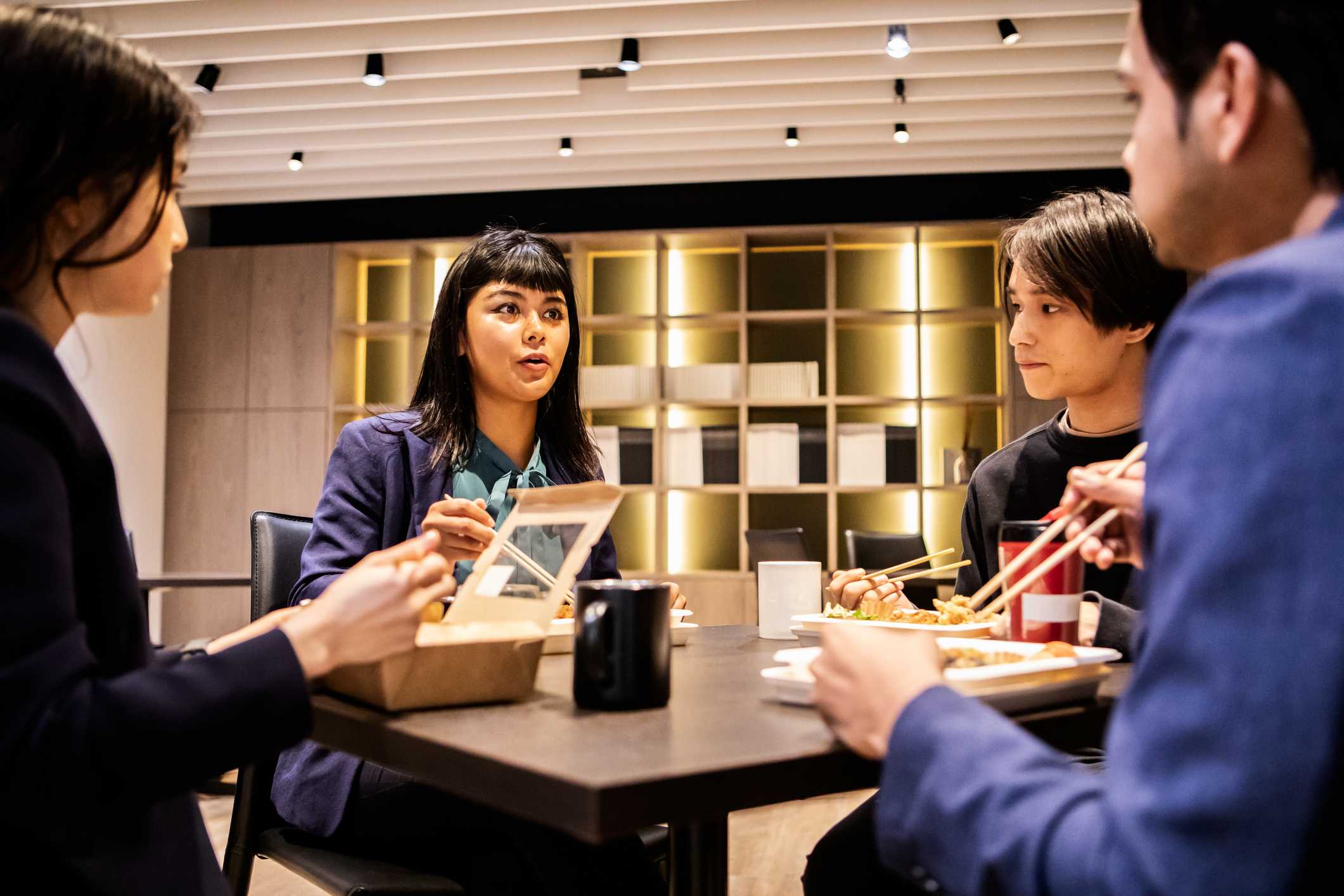When you’re planning a corporate event that involves food, menu selection is just one part of the process—you must also choose the catering setup. The right service style, room layout, and logistical plan can ensure the event goes off without a hitch. Learn what you need to keep in mind below.
Determine event basics
Before you plan catering, make sure you understand the basics of the event. Determine information including:
- Allow ample space between tables for people to walk and pull out their chairs.
- Leave floor space around serving stations for queues and passing traffic.
- Place trash cans or dish tubs at various points throughout the room.
- Create a clear exit path to doors.
- Plan an open area near doors to accommodate crowds.
Take these factors into consideration as you choose a catering setup. If you only have an hour for dinner, for example, you probably don’t want to plan a sit-down meal with formal service.
Choose a service style
Determine how you’re going to serve food at your event. Common options include:
- Plated service. While guests are seated at tables, servers bring individually plated meals to each person and collect dishes after each course.
- Buffet platter service. Guests walk along a long table and serve the food on platters to themselves; depending on the menu, they may eat sitting at tables or standing up. You can also use a cafeteria-style setup, where servers dish out food to guests from the other side of the line.
- Serving Stations. This catering setup uses multiple buffet- or cafeteria-style serving stations, each with a different type of food. One could have a carving station, while another might feature salads or desserts.
- Cocktail service. Servers pass out appetizers, small plates, or other finger foods. Guests typically roam freely around the room or gather at tall cocktail tables with or without stools.
- Boxed meal service. Guests choose their meal options in advance and the caterer or restaurant packages them individually and delivers them at the scheduled time.
In some cases, the event space will dictate your options. A small room can’t always accommodate serving stations, which means you might need to go with plated or individually boxed meals.
Design serving stations
If you’re using a buffet or serving stations, you’ll need to decide how each one will work. Well-designed stations ensure your guests can get food quickly and move effortlessly.
Ask yourself a few key questions:
- Will you have servers or use a self-service model?
- Do you need hot dishes or cold plates?
- How many staff members do you need to replenish food items?
- What serving utensils and spoon rests do you need for each dish?
- Do you need space for condiments?
- Should guests walk on both sides of the buffet line?
- Will you need electricity for any of the stations?
Lay out the space
With the service style and serving stations in mind, create a layout for the event space. Draw a floor plan to scale on graph paper, and create a map using the actual measurements for tables, chairs, serving stations, and trash cans. Depending on the event, you might also need room for a dance floor or stage.
As you create a layout, keep these tips in mind:
- Allow ample space between tables for people to walk and pull out their chairs.
- Leave floor space around serving stations for queues and passing traffic.
- Place trash cans or dish tubs at various points throughout the room.
- Create a clear exit path to doors.
- Plan an open area near doors to accommodate crowds.
Plan for setup and tear-down
Whether you’re using a buffet or boxed-meal catering, there’s always a certain amount of setup and cleanup involved. Caterers and rental companies may handle some or all of the process, but you’ll likely need to set up and tear down tables and chairs, deal with trash disposal, and clean the space.
Before the event, determine who’s responsible for each task. Then, estimate the amount of time you’ll need and build it into the schedule for the day. If you’re renting the space, you may need to add buffer times before and after the meal itself.
Want to keep your catering setup as simple and straightforward as possible? Work with Grubhub Corporate Accounts to manage the ordering process. The user-friendly Grubhub platform is available 24-7, so you can choose a menu and schedule delivery at your convenience. To see how it works, get started with Grubhub Corporate Accounts today.






